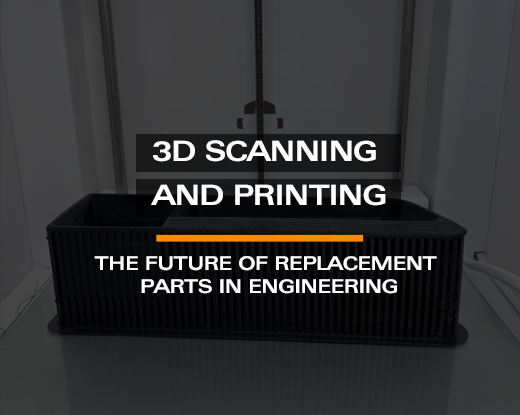3D Scanning and Printing: The Future of Replacement Parts in Engineering

Are you an engineering company in need of replacement parts that are hard to come by? Or maybe you have a custom project that requires a specific part that can't be purchased anywhere? Well, with the EinScan HX 3D scanner and an Ultimaker 3D printer, you can easily create the part you need. In this post, we'll walk you through the steps we took to 3D scan and 3D print a car part that was hard to find.
Step 1: 3D Scanning with EinScan HX
The first step in creating a replacement part is to use the EinScan HX 3D scanner, which uses blue light laser technology to create high-quality and accurate scans of even the most intricate parts. With the ability to scan in high resolution and in color, the EinScan HX allows engineers to create accurate representations of parts that may no longer be available.
Step 2: Validating the Scan and Reverse Engineering
Once the 3D model has been scanned, it's important to validate the scan and ensure that it accurately represents the original part. This step is crucial for creating a part that can be printed and used for its intended purpose. Engineers can use software tools to compare the 3D model to the original part and make any necessary adjustments.
Additionally, engineers may choose to use the 3D scan as a starting point for reverse engineering the part, allowing for modifications or improvements to be made. This is especially useful when the original part is no longer available or does not meet the specific needs of the project.
Step 3: 3D Printing with Ultimaker

With the validated 3D model, the final step is to 3D print the part using an Ultimaker 3D printer. Ultimaker is a reliable and easy-to-use 3D printer that produces excellent prints every time. For our car part, we chose to print it using nylon material for added strength and durability.
The Final Result
After a few hours of printing, we had a perfect replica of the missing part for our engineering project. The replacement part not only fit perfectly, but it was also stronger than the original part thanks to the use of nylon material. With the part printed, it was now ready for post-processing, including painting, sanding, or other finishing techniques to match the existing parts.

Conclusion
If you're an engineering company in need of replacement parts or have a custom project that requires a specific part, consider using the EinScan HX 3D scanner and an Ultimaker 3D printer. The process is simple and easy to follow, and the results are impressive. With this technology, you can create high-quality, accurate replacement parts that are no longer available, or reverse engineer existing parts to make modifications or improvements. Contact our team to see how we can help you create the parts you need for your engineering projects.
